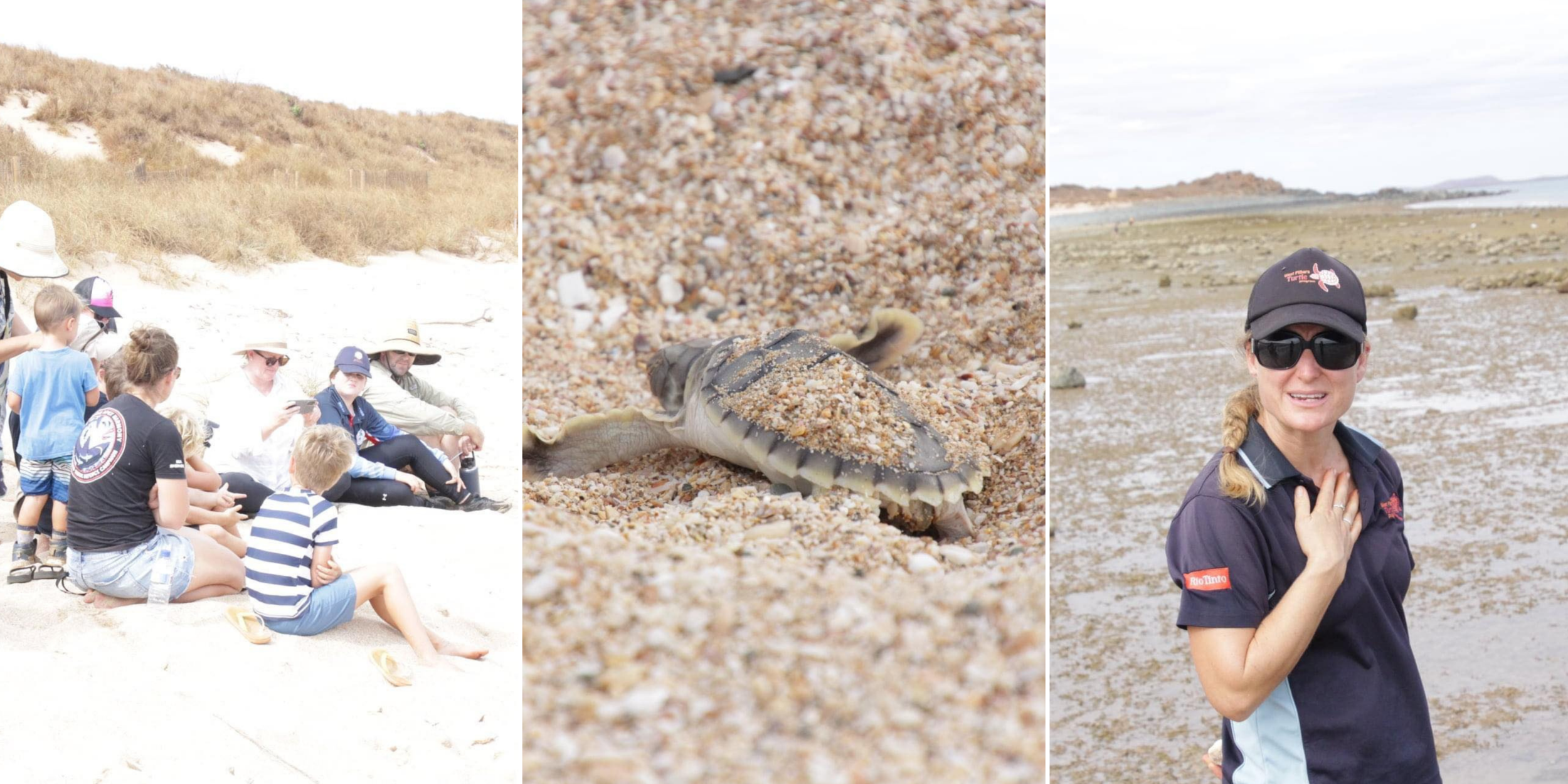Volunteers work together to care for Pilbara turtles
Each summer in the West Pilbara, community members are out on the beaches, searching for turtle nests and tracks.
Sarah McDonald, coordinator of the West Pilbara Turtle Program, told Ngaarda Radio’s Marion Cheedy that volunteers are the “backbone” of the program.
“We have a volunteer or two or five on the beaches around Cleaverville and Wickham from the start of November through to the 16th of January.
“They're walking the beach every morning looking for turtle nests and tracks. Part of their job is counting and getting the data for us, but their job in the wider community, spreading the message of turtle conservation and generally helping to look after the environment and turtle nesting beaches, is far beyond just collecting that data.”
The program is led by the Department of Biodiversity, Conservation and Attractions Parks and Wildlife.
McDonald explained that of the seven species of marine turtle in the world, three regularly nest in the Dampier Archipelago and the mainland around Wickham and Karratha: the flatback, the hawksbill and the green.
All three of those turtle species are listed on the threatened species list. “They're either vulnerable or critically endangered, like the hawksbill,” said McDonald. “So programs like this are absolutely essential to knowing how they're going, what's impacting them, how their nesting beaches are being looked after, and how people can interact with turtles in an appropriate way.”
On the mainland, the vast majority of turtles are flatbacks, although “occasionally a hawksbill or green will visit.”
Other species can be found on the islands. Rosemary Island is home to “a globally significant nesting population of hawksbill turtles,” said McDonald.
“And we also get greens in quite good numbers out on all the islands around the archipelago. On Delambre, we'll get all different species.”
McDonald said that the flatback turtle has a lifespan of 60 to 100 years, if they manage to make it past being a hatchling.
“Unfortunately, it's only one in 1000 that survive from being a hatchling to an adult, to breeding age. So if you can make it, you might have a long life.”
It’s hard to know if the turtle population is increasing or decreasing. “At the moment, we're just having some analysis done to see what the population stability is, to see whether turtles are increasing or decreasing or if they're kind of the same,” said McDonald.
“From our raw data, just our raw numbers, it looks like the population around Wickham's fairly stable, but they are a really long-term, long-lived species. So you need decades of data to know what's happening. Impacts on the nesting success now might not show up for another 20 to 30 years when they start breeding again.
“I suppose we don't know if the program’s a complete success in terms of turtle data, but I would say it's a really big success in educating the community: just making sure people are doing the right thing when they see nesting Turtles and looking after the nesting beaches.”


